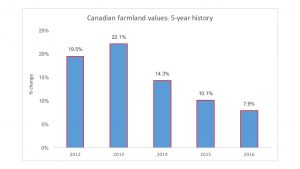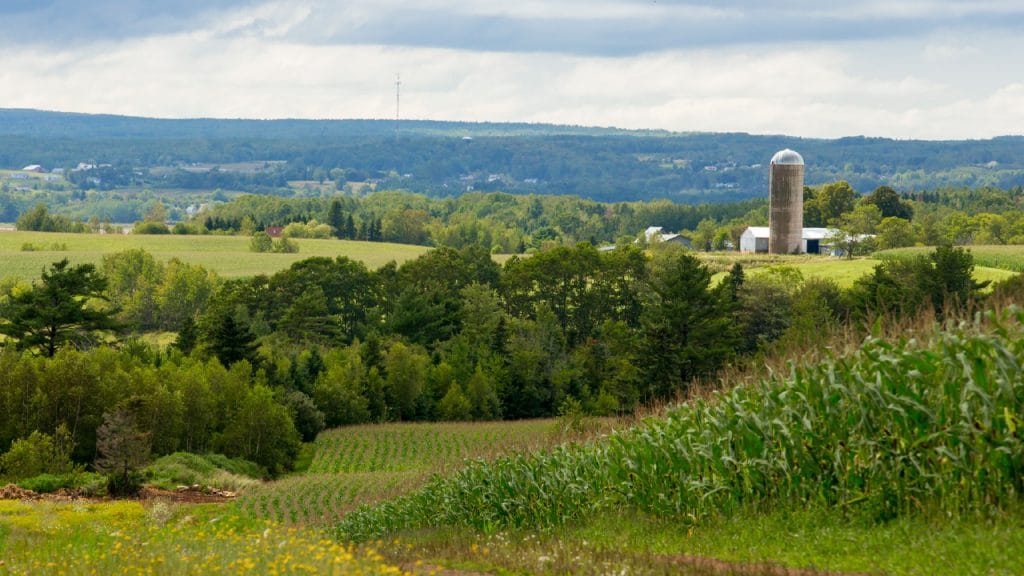Canadian farmland values increased at an average annual rate of 7.9 per cent in 2016. While farmland values continue to strengthen, their rate of growth continues to slow overall. This is the third consecutive year the rate of increase declined year-over-year.

Growth in Farmland Values Slows
2016 farmland values increased in every province (except Newfoundland and Labrador, not enough data), with increases ranging from 1.9% (NB) to 13.4% (PEI). However, the rate of growth slowed for the third consecutive year in Saskatchewan, and for the fourth successive year in Quebec and Ontario. A slowdown in the rate of appreciation at a time when crop receipts show signs of levelling out is a step in the right direction. It helps to keep farmland accessible for producers wishing to expand.
No Two Regions are Alike
The market for farmland is truly local. One region’s average annual variation often differs from the next. For example, Saskatchewan’s East Central region recorded flat prices on average, while the Northeast region recorded a 9.3% average increase — an increase concentrated in only a few areas within the region..
Income and Interest Rates: Two Important Drivers
Healthy farm incomes helped drive up farmland values. Tallies for 2016 farm cash receipts aren’t yet available, but we expect crop receipts grew 2% from 2015 — or 10% above the average of the 2011-2015 period. This was thanks to a low loonie, which helped strengthen demand for Canadian ag products and soften the impact of weather-related production issues in the west.
Low interest rates also support growth in farmland values. The effective business interest rate of the Bank of Canada steadily declined throughout 2016, reaching a record-low in the last quarter of 2016.
For even more insights and trends, check out our 2016 Farmland Values Report page.











